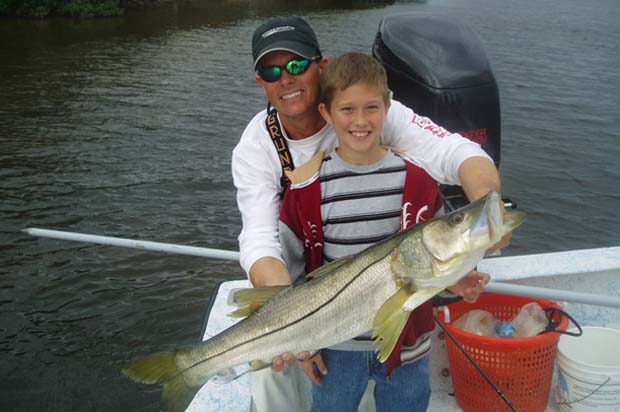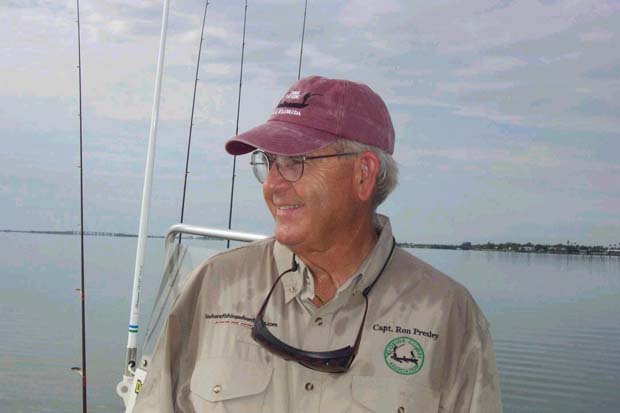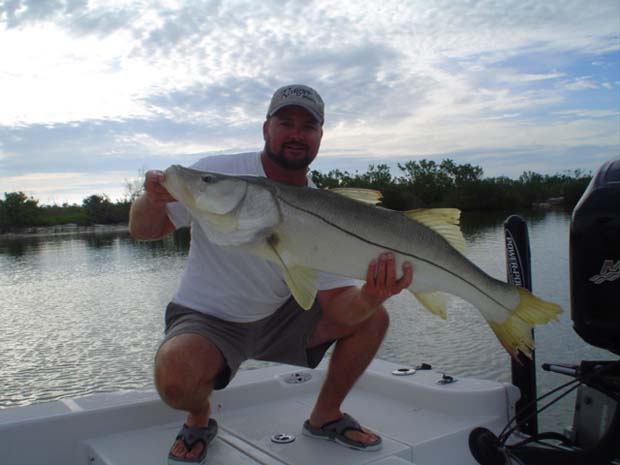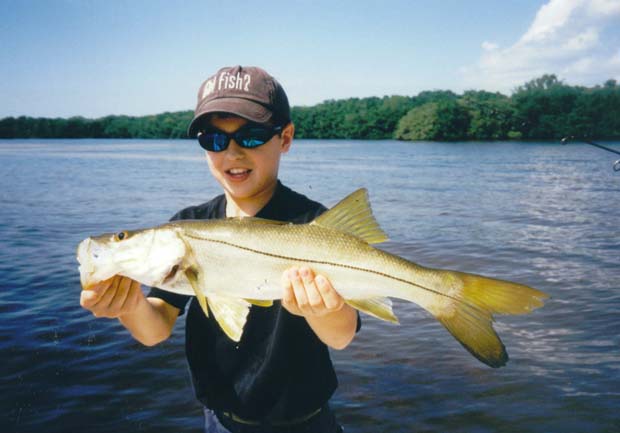By Skip Clement
Many weeks ago, I caught up with Capt. Ron Presley by phone. He was on his way to a Florida Sportsman show in Tampa to represent the Snook and Gamefish Foundation. Much of what he had to say is in his article below, but quite updated.
Background
With budget cuts put in place as soon as Governor Scott took office, the agencies that assess and evaluate the snook populations in the State of Florida were instantly hamstrung. They didn’t have the manpower or money to evaluate anything so they just closed the snook fishery on the west coast. It angered many anglers who knew the fishery for snook had recovered from the freeze two years prior and that blind closure was not data driven and certainly not scientific. When I talked with officials at the Fish and Wildlife Commission (FWC), they were somewhat sheepish and said, in a manner of speaking, they preferred to er on the side of caution by using prior years’ data. There didn’t seem to be much point in pursuing the subject.
By Capt. Ron Presley
Historically, recreational anglers have not considered themselves data collectors unless it was for their personal use. Data collection consisted mainly of a fishing log that kept track of what, when, where, why, and how. Information like date, location, weather conditions, fish caught, and baits used were all recorded. The data could be retrieved later to help them in their quest to catch that trophy fish.
That stereotype is changing with the recognized need for new and improved data to be used in the science of fishery management. Recreational anglers are beginning to realize that they can make a significant contribution to science through personal data collection and submission.
Leading the charge in educating the recreational angling community on their potential role in fishery management is the Snook and Gamefish Foundation and their Angler Action Program (AAP). Data collected in this program fills a critical need in fishery management by providing data on released as well as harvested fish.
One angler that recognized the need early on was Capt. Danny Barrow. “Having the opportunity to help fisheries researchers is an honor in itself,” says Capt. Barrow. “As an angler I feel it is my duty to log my fish with AAP. Just the thought of knowing I have a hand in helping insure a better fishery for future anglers is comforting.
AAP collects information on fish sizes, numbers and locations, data that is only available from anglers recording their fishing trips. Believe it or not, even trips with zero catch are important to the validity of the collected data. Researchers want a complete picture of how recreational anglers are doing, and that includes zero catch trips.
The Angler Action Program began as a paper form based procedure where data was collected, recorded, and then transferred by computer to the data base. It has evolved into a high-tech Smartphone based program.
It is surprising how many anglers have Smartphones today. Increasing levels of technological knowledge has gripped the angling community and made everything from navigating on the water to finding bait and tackle shops easier. AAP jumped on the high-tech bandwagon and made fishery data collection easier too.
The new iAngler phone app gives participating anglers the ability to log their catches real time. It doesn’t get much easier than that. Anglers can even include a photo of their catch in the same submission. Of course the original Angler Action Program is available on line for those not yet using Smartphones. Once the log is made, anglers can review their trips on either the phone or on their home computers.
Capt. Barrow sees the online log as a bonus that comes from submitting data. “Having a personal log book online that I can go to any time and research past catches and fishing locations is a major plus. Logging my fish at AAP is a win win situation!”
The data gained from recreational anglers will help researchers fill in missing gaps like discard data (fish not harvested), which is currently a best guess estimate. The program will provide timely data to better forecast closures and reopenings; the program will provide more location specific data; and, the program has the potential of developing new approaches to stock assessment.
True success for the program will come as more and more anglers participate and log their fishing trips. In its short history, participation in AAP is trending upward as more anglers discover the ease of recording data and realize the importance of their role in the collection process.
The first year of the program was 2010. The kickoff in March resulted in a total of 654 anglers participating by the end of the year. The first full year of data collection saw that number nearly double to 1,116 in 2011. A goal of 3000 anglers in 2012 will be easily reached, as 2,927 have been identified through September.
Continued success in participation rates will depend on how well users are satisfied with the program. Weekly quality assurance interventions by phone and email have found most users to be satisfied with the current system. Follow up on this aspect of the program is needed and will be addressed with a user satisfaction survey.
Research partners have expressed continued interest and deepening commitments to the program. FWC Division of Marine Fishery Management, National Park Service, and University of Florida scientists have embraced the program in one way or another.
Angler Action data has already been used in one fishery study. Robert G. Muller and Ronald B. Taylor used angler collected data in publishing “The 2012 Stock Assessment Update of Common Snook, Centropomus undecimalis.” Commenting on the use of AAP data, Dr. Muller said, “Your Angler Action site currently is collecting the type of information we need, i.e. date, time, location, number of anglers and the sizes of all fish caught, not just the harvested fish.”
In order to fit the scientific models of fishery managers the Angler Action Program collects data in total fishing hours for each species of fish. This is the data scientists asked for and need. Total fishing hours collected have trended steeply upward from just over 2000 in 2010 to more than 12,000 in 2012 with only nine months of data reported at this writing.
The long term goal of AAP is to impact management plans of several species with recreational catch data before 2015. Some of the managed species for which the program is collecting data include spotted seatrout, redfish, red and other snapper species, grouper species, tarpon, and black sea bass. Favorite targets of anglers are spotted seatrout, snook, and redfish. So, it is not unexpected that the most often recorded catches are of those three species.
Another interesting observation is the fact that many of the recorded fish are released to be caught another day. Some of this is explained by the fact that all fish are measured, not just legal ones, but a large percentage of legal fish are released too. This observation seems to point to a trend that more and more anglers are becoming sensitive to the importance of catch and release as a function of conservation.
Angler Action is a program whose time has come. Seeing beyond the data to recognize the real world benefits to the fishing community will convince recreational anglers of their role in data collection and bring more into the process. As the data base grows it will pay high dividends to the future of the fishery resource while easing the burden on scientists who must make decisions about the resource.
[information]
Links:
snookfoundation
angleraction
iAngler
Muller
Capt. Danny
[/information]









